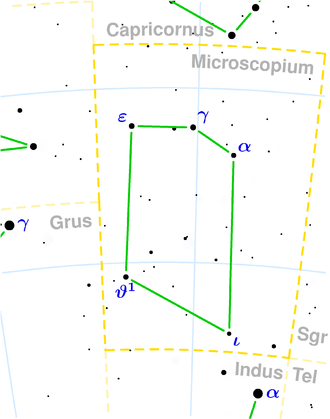NGC 6999
| Galaxy NGC 6999 |
|
|---|---|

|
|
| Photo from the Hubble Space Telescope | |
| AladinLite | |
| Constellation | microscope |
|
Position equinox : J2000.0 , epoch : J2000.0 |
|
| Right ascension | 21 h 01 m 59.5 s |
| declination | -28 ° 03 ′ 32 ″ |
| Appearance | |
| Morphological type | SA (s) 0 ^ 0 ^ |
| Brightness (visual) | 14.0 mag |
| Brightness (B-band) | 15.0 mag |
| Angular expansion | 0.90 × 0.7 |
| Position angle | 179 ° |
| Surface brightness | 13.4 mag / arcmin² |
| Physical data | |
| Affiliation | Abell 3733 |
| Redshift | 0.036692 +/- 0.000036 |
| Radial velocity | 11000 +/- 11 km / s |
|
Stroke distance v rad / H 0 |
(494 ± 35) · 10 6 ly (151.5 ± 10.6) Mpc |
| history | |
| discovery | Albert Marth |
| Discovery date | October 19, 1864 |
| Catalog names | |
| NGC 6999 • PGC 65940 • 2MASX J21015953-2803313 • SGC 205900-2815.4 • GC 5981 • | |
NGC 6999 is a lens-shaped galaxy of the Hubble-type S0 in the constellation Microscope in the southern sky . It is around 494 million light years away from the Milky Way and has a diameter of around 130,000 light years . The galaxy is the brightest and therefore eponymous member of the so-called NGC-6999 group, to which NGC 6998 also belongs.
The object was discovered on October 19, 1864 by Albert Marth .
Individual evidence
